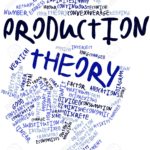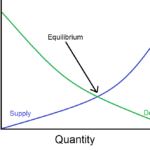In order to save money, the corporate accountants use a variety of techniques, including depreciation and amortization. Both constitute methods of accumulating tax write-offs for items that a company owns for the duration of their useful life span. These terms may appear to mean the same thing, however it differs from in term of the asset derived and its calculation. The basic difference between amortization and depreciation is that amortization charges off the cost of an intangible asset, while depreciation does so for a tangible asset.

http://www.mnp.ca
Amortization
Amortization is a technique of spreading the cost of an intangible asset over a specific period of time, which is usually the course of its useful life. Patents, trademarks, and copyrights are the example of intangible assets, which are non-physical assets. The goal in amortizing an asset is to match the expense of acquiring it with the revenue it generates.
For instance a company spends $50,000 to acquire a license, and the license in question will expire in 10 years. The license is an intangible asset, thus it should be amortized for the 10-year period leading up to its expiration date. Using the straight-line method of amortization, which is a method for charging a cost to an expense at a consistent rate over time, the company’s annual amortization expense for the license will be $5,000 (that’s $50,000/10 years), meaning the asset will decline in value by $5,000 every year.
Depreciation
Like amortization, depreciation is a technique of spreading the cost of an asset over a specified period of time, typically the asset’s useful life. The purpose of depreciation is to match the expense of obtaining an asset to the income it helps a company earn. Depreciation is applied for tangible assets, which are physical assets such as business vehicles, manufacturing equipment, and computers. Depreciation is a measure of how much of an asset’s value has been used up at a given point in time.
For example a company purchases a new piece of equipment with an estimated useful life of 10 years for the price of $100,000. Using the straight-line method, the company’s annual depreciation expense for the equipment will be $10,000 ($100,000/10 years). This is important because depreciation expenses are recognized as deductions for tax purposes. It is also possible for a company to use an accelerated depreciation method, where the amount of depreciation it takes each year is higher during the earlier years of an asset’s life.
The vital differentiation between amortization and depreciation is that amortization is used for intangible assets, whereas depreciation is used for tangible assets. Another major difference is in term of calculation. Amortization is almost always implemented using the straight-line method, while depreciation can be implemented using either the straight-line or accelerated method. Lastly, due to the intangibility, amortized assets do not have a salvage value, which is the estimated resale value of an asset at the end of its useful life. Depreciated assets, by contrast, frequently have a salvage value. An asset’s salvage value must be subtracted from its cost to decide the amount in which it can be depreciated.
More from my site






